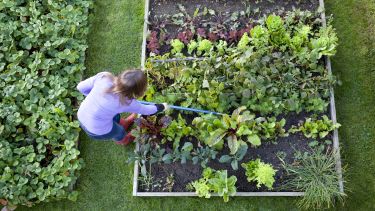- University of Sheffield study finds space for urban allotments fell by 65 per cent from 1960 to 2016
- The most deprived areas have seen eight times more allotment closures than the wealthiest areas
- Restoring former allotments could meet up to 100 per cent of current demand for new growing space in some areas
Land dedicated to allotments has declined by 65 per cent from a peak between the 1940s and 1960s – with the most deprived urban areas seeing the biggest cuts in food-growing space – according to new research.
Academics at the Institute for Sustainable Food at the University of Sheffield analysed historic maps covering Bristol, Glasgow, Leicester, Liverpool, Milton Keynes, Newcastle, Nottingham, Sheffield, Southampton and Swansea from the beginning of the 20th century to 2016.
The study, published in the journal Landscape and Urban Planning, found the lost land could have grown an average of 2,500 tonnes of food per year in each city.
The most deprived areas have lost eight times more allotment space than wealthier parts of the cities and were far more likely to see allotments converted to commercial and industrial buildings. By 2016, of all the areas historically recorded as allotments, just over a quarter was still allotment land, while almost half (47.9 per cent) had been built on and another quarter had become different types of green space.
Councils have a legal obligation to provide enough growing space to meet demand – which has surged over the last 20 years. In England, waiting lists grew from fewer than 10 people per 100 plots in 1996, to more than 50 for every 100 plots in 2013.
However, the academics found that four out of the five cities for which waiting list data was available (Southampton, Newcastle, Leicester and Sheffield) would be able to meet current demand by restoring former allotments that have been converted to green space. On average, three quarters of this land was suitable for reconversion – with the potential to feed an extra 14,107 people.
Almost half of land suitable for restoration to allotment space is in the most deprived areas – suggesting that the most food insecure communities stand to gain the most from such an initiative.
With waiting lists growing ever longer, this trend of declining allotment land is worrying – but our research has shown that one way councils could meet demand is by simply restoring former sites.
Growing our own fruit and veg has huge benefits for people’s health and wellbeing, and can contribute to local food security and improve our environment. Our findings strengthen the case for preserving existing plots and boosting growing space, particularly in deprived areas, to share those benefits more fairly across our cities.
Miriam Dobson
PhD researcher at the University of Sheffield and lead author of the study

